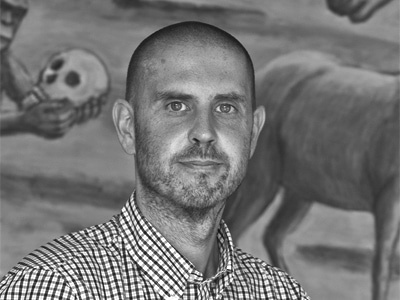
Damian Skinner: These collectors are not in their thirties, they’re in their fifties and sixties. Is it a situation where, as people get older, they suddenly become contemporary jewelry collectors? Or are we are not capturing the interest of new collectors?
Lasse Pahlman: I said to Helena yesterday, I have a funny expression that I can say, why don’t pretty young women wear jewelry, why don’t young, pretty women wear diamonds? It is always when you come to a certain age that it starts. It is not a kind expression, but it was the same thing with an established Finnish jeweler. He didn’t make contemporary jewelry, he made jewelry in silver and semi-precious stones in wonderful forms. He said it is always the fat women who wear his jewelry. I’m not allowed to say old women because . . .
Helena: Because I wear it!
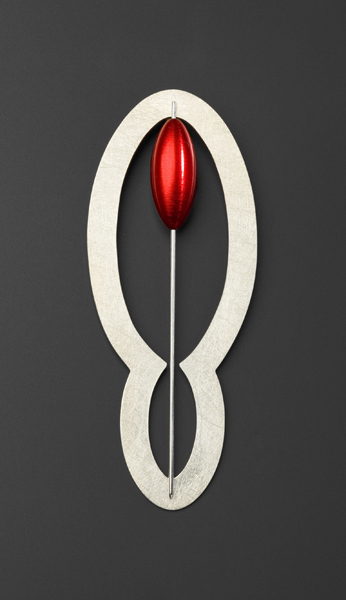
Lasse: I think it is difficult. To start to like contemporary art is always very difficult. People are always thirty years behind the artists and the problem increases when we talk about contemporary jewelry because it is still a smaller public in jewelry than in fine arts. In some ways I think it was good and in other ways problematic that in the 1960s and 1970s jewelers abandoned precious materials. And when you look at a piece of jewelry that is very small and not made of anything that has a materialized value to it you start to think… It is the artistic expression that is important, but the public were not fast enough to understand or accept. Why do I pay for a small thing? It needs a lot of education, it needs people to go to exhibitions. If the galleries for example are 300 kilometers from where people live, then the exhibitions are only shown for the artists themselves, they educate themselves from each other, they go to exhibitions for each other, they have great fun. In Finland, we have a big supporting system, we have many funds. These people don’t earn themselves money, they get it from the public or somewhere else. Also, the artist should come to where the public is. Very few artists wear their own jewelry. We were discussing it yesterday and one artist told us when she wears her jewelry her friends say, why do you always wear your own jewelry? And I think if the person doesn’t wear her own jewelry and be proud of it, how should they expect that somebody else will?
You’re definitely right about the small world, it’s the same people talking to the same people all the time. Jewelers show to other jewelers, other jewelers write about what they do. It’s a kind of closed circuit. How you break open that closed world to include other people in it is a really good question.
Lasse: When you go to exhibitions like Schmuck in Munich, you realize that it is always connected to an art school. To be able to make a name for themselves, it is always that they should belong to a certain group in a certain country and if they are outside that group and are very individual, then they are outside all the exhibitions because it is always about the contacts. That is what I believe. The teacher or professor is always suggesting certain people should take part. I think in Finland it is also a very limited number of people who decide who is allowed to take part in these international exhibitions. If you are outside that group, even if you are very good or if you are different or if you are not going with the world trends, then you are not accepted.
How many contemporary jewelers would there be in Finland?
Lasse: Fifty to one hundred.
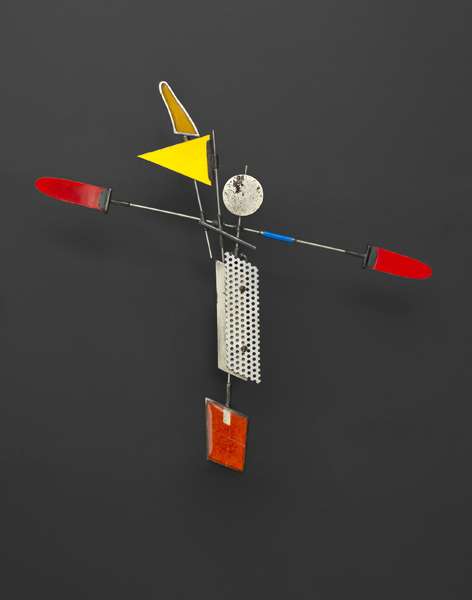
Lasse: There was an excellent gallery in the 1980 called Philippe Debray, who brought in big names from overseas. At that time very few knew who the international artists were and we became very interested in them.
Helena: But we were young and poor.
Lasse: And we didn’t have much connection to Europe and its jewelers. So nobody knew how excellent the gallery was.
Helena: Far away from Helsinki.
Lasse: This gallery was in a small, small cottage, a home gallery. It was impossible for Debray to continue. Then there came some other galleries, but they also closed. Today there is no other gallery than Galleria Norsu [since closed] in Helsinki but they show all kinds of contemporary art, they are not only specialized in jewelry, even if jewelry is a big interest for them. They have a jewelry exhibition every now and then. There is a jewelry artist, Clarice Finell at Gallery Johan S, who also has a gallery but shows about eleven fine art exhibitions and one jewelry exhibition each year. Norsu is the main gallery and they are excellent. They also show artists from Sweden, Denmark, Norway and Estonia.
How would you distinguish between contemporary jewelry and the modernist jewelry that was so prominent in Finland and Scandinavia in the 1950s and 1960s?
It is a different practice. For me, it is industrial production and I prefer the unique pieces, the individual pieces, the artistic pieces. We have a lot of that 1960s and 1970s work in our collection, but we don’t usually show it because they are industrial pieces and perhaps somebody else has the same.
I understand. How did you start collecting contemporary jewelry?
Helena: Lasse, you can tell the story because it’s a nice story and it’s about what kind of person you are.
Lasse: There are many stories.
Helena: Tell the one story.
Lasse: We became both interested in the fine arts and of course my wife is as interested in this and I think has even a better taste.
Helena: Thank you for that.
Lasse: I became so fascinated that I started to buy fine art. And with all collectors, or some of them, they get a guilty conscience because you can buy too much art. We never had as much money as some. We couldn’t just go and buy without thinking how much it costs, but I started to get a guilty conscience. I had a very good excuse for buying sculptures and paintings if I started to buy jewelry and make Helena happy, so . . .

Lasse: Yes, exactly!
Helena: And it is easier to find a place to keep it, because it was difficult to find places for all the fine arts.
Lasse: It started in the early 1970s, with both craft and fine arts. It was how do you say . . .
Helena: Mixed.
Lasse: Look for the beauty, look for the artistic expression.
Helena: Something beautiful to have at home.
Lasse: So it went alongside this, but of course the interest in contemporary jewelry has grown very much for us. At the beginning, we were not so specialized.
So would you say now you really do specialize in collecting contemporary jewelry?
Lasse: Yes, you could say that.
What was the first jewelry that you bought?
Lasse: The first jewelry was when we fell in love. But the unique pieces were from Matti Mattsson and Eila Minkkinen. As I told you, it was impossible to find international jewelry in Finland. Now there are big exhibitions, like Koru and the Nordic Triennial, but they come about once every third year. So we started of course with Finnish jewelry.
With the modern style?
Helena: Yes. But after that we also bought some old jewelry.
Lasse: And we also started to buy at the artists´ organization sales, where the people who had no place to sell their pieces came to show it and sell it. The people were very . . . extraordinary?
Helena: Yes, nice people. Jewelry artists in all countries are very nice people.
Lasse: Modest.
Helena: Modest and warm. We were interested in these people and some of these became our friends. Most did.

Helena: Step by step.
Lasse: Step by step, yes. I have always worked for big international companies doing administration and financial jobs and I always had many possibilities on my job trips to take some spare time, or take an additional day when I went to London or France or Vienna or something like that. I used it to go and look at the galleries and museums and I also went to the jewelry galleries.
Helena: You started with Denmark.
Lasse: Yes, Denmark very much. But that was not galleries, it was more the artists’ shops, in Denmark they have these artists’ shops in the street, so you can go and see a one-man show or one person’s work in their shop. In Denmark very much and in Sweden. You get quickly familiar with much of the jewelry field. So we started with Scandinavia and Germany, because we met some artists at seminars in Finland. And in the 1990s very much Estonia, because we love Estonian jewelry.
Helena: It was easy for us because it is so close to Finland.
Why do you think Estonian jewelry is unique?
Lasse: I would like to say, the world is going too much now in trends and everybody is doing the same thing. Jewelry artists are educated in Germany, they go to Spain, they go to Lappeenranta, they go to everywhere and then they combine all these things. Some are very personal but there are some trends that are everywhere and you cannot find any difference. It would be interesting to analyze the difference between the schools and whether you can recognize who is the teacher! But Estonia was for a long time a part of Russia and was separated from western jewelry. They had, and still have, a very personal way of working which you perhaps can recognize and see that it comes from Estonia.
Helena: And they don’t have money to use precious materials.
Lasse: And they have a very long tradition of making jewelry and they educate students from all the Baltic countries. So they combine this all and they have a beautiful and motivating teacher, Kadri Malk, which is just fantastic.
When did you notice that the same trends were appearing everywhere?
Lasse: You answer that Helena.
Helena: No, because I don’t know when we recognized that. Maybe eight or ten years ago it started.
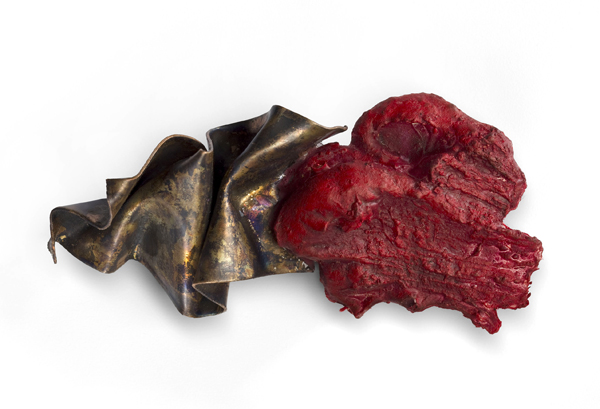
Helena: Heritage.
Lasse: Yes, heritage. It became something that was a trend or something from a teacher that you adored. But still I think in every field in the arts you can always find genius. And you can still find differences between something that you like, something that is good and excellent and something that is bad. Ordinary people don’t go and look at it and contemplate and look and look and look, they cannot find a difference, but for a person who has looked enough and is interested in it, you can always find your favorites and identify differences, even if they are almost nothing. There are still great artists.
So how big is your collection of contemporary jewelry? How many pieces?
Lasse: We have documented more than 1000 pieces. It is very difficult to say, of course, since the jewelry pieces are not always contemporary jewelry and not all is excellent. If we should draw a line between what is contemporary and what is so good that you can call it an artistic piece, then perhaps 500 pieces.
So you have 500 really good examples of contemporary jewelry.
Helena: Yes, internationally interesting.
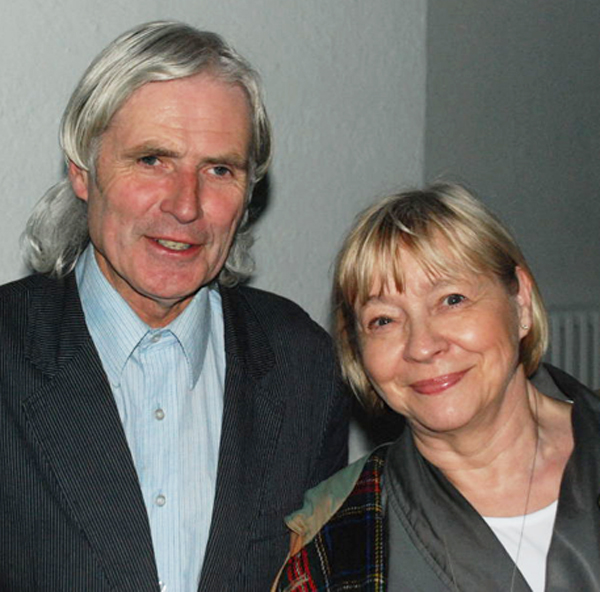
Lasse: Five years ago? It has never been a goal for us.
Helena: It just happens.
Lasse: We have been told that we are one of the few jewelry collectors in Scandinavia. As I told you, we are just ordinary people. We know that we cannot influence the market. It is to say too much if somebody comes to say that we are the only collectors. It cannot be true and we do not believe it.
Well, it indicates that you’re serious, even if it’s not all true, it shows that you are significant because you have a lot of pieces and you’ve invested a lot of time and money and energy into understanding contemporary jewelry and caring about it by collecting it. It says something, even if you can’t take that at face value.
Lasse: Many people came to say, why don’t you show your collection? That was really the reason, from that came the thought that we don’t do anything, we don’t want to be famous, this has all happened by accident. Now, when we are sitting here, perhaps five years ago we would have just said we want to be unidentified. But when so many people asked – we laughed at it at first, we thought it is not the purpose because we do it for our own fun, we have no goal or any thought about what will happen with it later. When people came to ask us to show our collection, we said it is not our goal, we have never thought of it, but if some good place is asking us or giving us the space, we will see what happens in the future. And then came the agreement with the Design Museum in Helsinki. After that it was a little bit more difficult to be unknown in public!
So when you’re buying jewelry, what governs your purchase decision? What are you thinking about when you acquire a new piece?
Lasse: Beautifulness and artistic features.
Helena: And also it should be wearable.
Do you wear most of the pieces that you have?
Helena: Yes. It’s very important to wear it. Every morning I think, what do I put on today?
Is there ever a time where you choose to buy something because it will relate to something that you have in the collection, it fills in a hole or it connects to another piece you already have?
Lasse: No.
Helena: No.
Lasse: It is a private collection, a personal collection and we are not like a museum we don’t think of having any holes. I know that the contemporary fine arts museum in Helsinki has a list of which pieces from which artists they should buy and I hate that approach. You buy the things that are good and what is the best and you do not buy by putting names on a list to buy. You should be more…
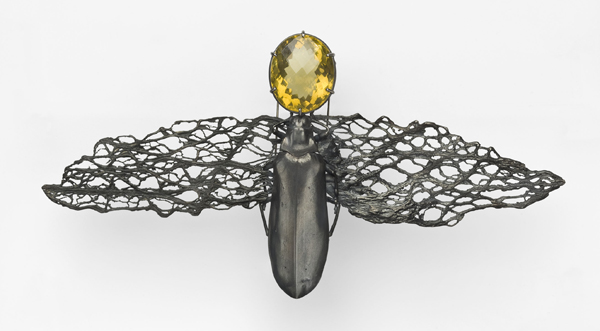
Lasse: Yes, spontaneous. And that is the big difference, why I think always the private collections are much better than museum collections. Museums are just bureaucrats who buy according to lists whereas private people go into action when they find the best piece.
What relationship do you see between the contemporary jewelry that you own and the contemporary art that you own? How do you see those things relating to each other?
Lasse: It’s just different techniques. The jewelers use different materials and that is too often forgotten but they need to be professional in using the materials they use, it is not the artistic feeling but it is a combination of techniques. From the end result point of view, there is not a difference between fine arts and jewelry. Jewelry you wear it, it is smaller and it is of other materials, but fine art gives the same impression. But then fine artists do not always succeed in making jewelry and jewelry artists very seldom succeed in making fine arts.
Helena: Lasse often says that a jewelry piece is like a painting or sculpture which you can wear or take with you.
Is there an aesthetic similarity between the kinds of art that you own and the kinds of jewelry that you own? If I came into your house and I looked at your jewelry collection and then I looked at your art collection, would I think, these were bought by the same people?
Lasse: You must find that out for yourself. Because it’s related to the same persons who make the choices they must have something in common. To say that you have good taste or bad taste, you should also relate it to who is speaking or in which culture you are living. It has to be according to our taste of what we like both in fine art and jewelry because there are many tastes. I am very careful to not say that others have bad taste. I can say it is not my taste that you have but it is very dangerous to say that I have good taste and you have bad taste.
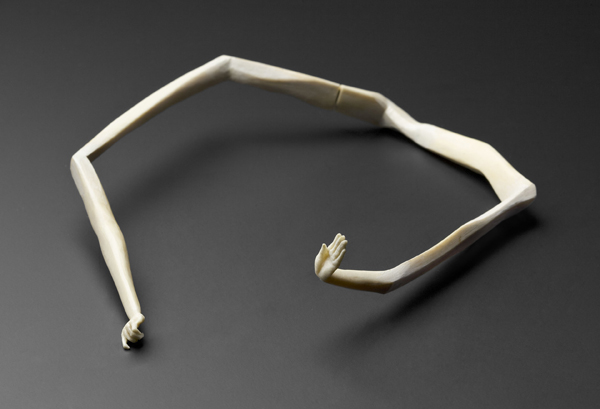
Lasse: Where did we buy the last pieces? We go to Schmuck in Munich and Collect in London. We’ve only been to Schmuck and Collect three times. We go to the big, famous European galleries, in the Netherlands and Vienna, here in Great Britain. And then we visit the schools. Spain, the Escola Massana is a good place, the Estonia school. Symposiums and lectures. We meet a lot of the artists themselves.
Helena: Many of them know us very well.
Do you travel a lot in order to acquire your collection?
Lasse: Yes. When we travel we always go to look at things.
How often would you travel in a year?
Helena: Not so much, five times abroad?
Lasse: This year perhaps I have been maybe eight times overall.
You’re so close to so many places, aren’t you.
Finland is very far away from central Europe when we travel from north of Finland. Actually we live in the south so we live close to Europe compared to the northern people. Finland is 1200 kilometers long so the distance from the north to the south is as far as it is from Helsinki to central Europe. And those who live in Denmark or central Europe, they go to the southern part, they reach the whole of Europe as quickly as we reach Copenhagen or something north, so the distance is rather big, but by flight it is okay.
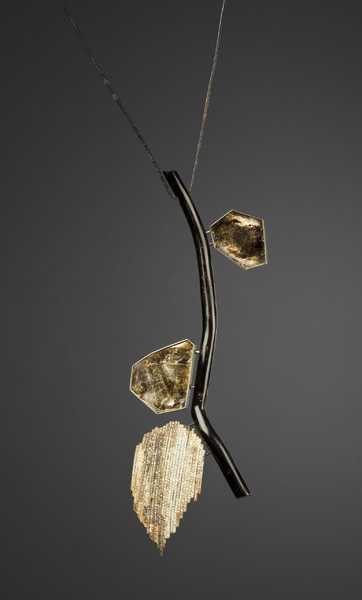
Lasse: I think that it will go to our daughter.
Helena: We have one daughter who is interested in jewelry too. Every year, more and more.
You’ve been involved with contemporary jewelry since the 1970s. How has it changed over that time?
Lasse: For us and perhaps generally, it has very much increased. What I felt in the 1970s was that contemporary art jewelry was an underground movement. The artists worked separately to the buyers and there was no contact. Nobody actually knew what was happening. Now, for me at least, I see they are more and more getting commercialized, there are galleries and more and more is being known and shown.
Helena: It is also easier now, because when we started we took books and wrote names and addresses and then you phoned or wrote a letter.
Lasse: Yes, when I went to Lithuania, I started by looking at all the catalogs, finding out who ware the artists in Lithuania, then I wrote to somebody.
Helena: In Estonia when they got independence we started to get information from catalogs, you picked the name and wrote an old-fashioned letter.
Lasse: Kadri Malk was having an exhibition and she asked me to write a foreword or short article in her book and I wrote about how I started my passion for Estonian jewelry and how I got interested. Kadri asked if she could add to it as a comment below it that I drew by hand the forms of the jewelry that I was interested in – and I have saved the copy of that letter for myself. In those days there were no digital cameras, you could not send a photo. If you put a letter in the post to Estonia you never knew if it would reach the person. The same when I visited Prague. There are many jewelry artists there and I tried to reach many but it was very difficult. I remember when I reached Pavel Opocensky who makes beautiful jewelry and had been living in the United States. I always remember when I went to his studio, he was not only making jewelry, he was making big granite stone sculptures. He had broken his leg and he had a blue plastic basket on it and he looked funny, working with his drill. He took me home and showed some pieces. There are very many stories that are connected to these funny appointments with jewelers.
